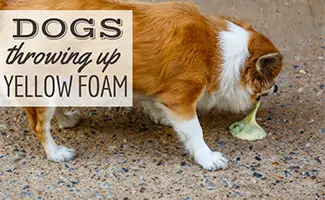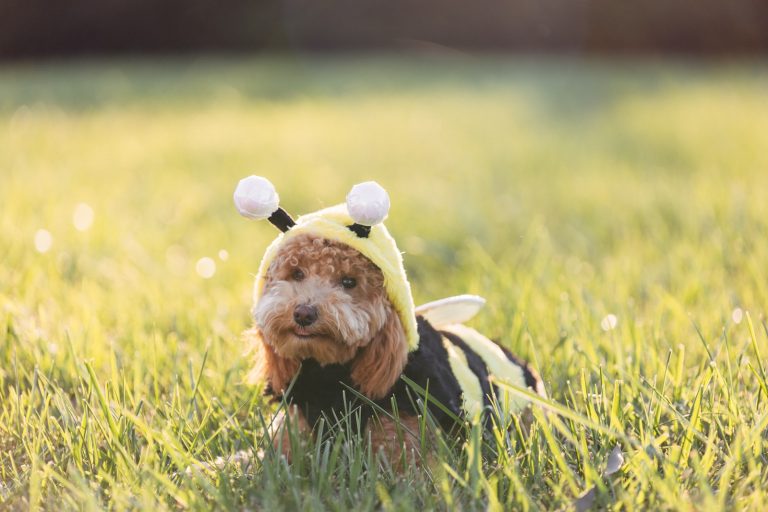If you have a dog, you have likely experienced that sinking feeling that occurs after walking in your door and discovering piles of vomit on the floor. Or worse, walking in the door and smelling something unexpected, before you see the diarrhea carnage.
How did this happen?
Dogs are susceptible to viral and bacterial diseases just like we are. We become sick by being exposed to something out in public. Your dog puts his nose in the grass and dirt, eats things outside, and may occasionally get into the garbage. Even something as simple as table scraps or a diet change can cause gastrointestinal upset.
We can all relate…
So, what do you do next? Your choices are:
- Put your dog in your car, hope that she does not continue to have unhappy accidents during the trip, and drive as fast as legally allowed to the nearest, open veterinary facility for treatment.
- Wait it out, with home monitoring and treatment.
This article will help you determine when it is safe to wait and when you should seek help, and will give you 5 tips for recovery.

Is it Safe to Wait?
Keep in mind that your dog’s gastrointestinal tract is not a mysterious black box. They absorb nutrients from food and create waste just like us. So, when they get sick, you can use much of the same logic that you follow for yourself. The following list will help you determine if your dog needs immediate medical care, or if it is safe to wait.
Is Your Dog Still Acting Normally?
When a human is sick, if she physically cannot get out of the bed, it’s time to go to urgent care. The same rule applies for canines. If he is still bouncy and interactive, it is likely OK to wait. BUT, his activity level needs to be considered along with guidelines 2 and 3.
Is Your Dog Resting Comfortably?
If she is still actively having diarrhea and/or vomiting (especially both), this can lead to dehydration and she would benefit from earlier treatment.
Did Your Dog Vomit Just Food?
If you see evidence of non-food items in the vomit, or if you know that something is missing or torn up, you may want to consult with a professional. Occasionally non-food items get lodged and may require surgery.
One MAJOR Caveat
If your dog is gagging and retching, but nothing is coming up, this may be a sign of BLOAT and needs immediate medical intervention as this is life-threatening. Generally, dogs that are bloated are restless, pacing, and may even have a larger-than-normal abdomen. So if you see this combination of signs, seek immediate care.
So, You Have Decided to Treat at Home…
What now? Again, think of how you feel when you are sick and apply the same rules to your canine friend. You will need to enforce these guidelines, because in many cases, she will not make the best choices for herself (and NO, eating grass to vomit more is not a good choice).

Withhold Food
No exceptions. Think about it. If you have been vomiting or having diarrhea and your stomach is cramping, do you eat? OF COURSE NOT!! So give your dog’s gastrointestinal tract a break. Skip the next meal and see how she does. Skipping one meal will not hurt her. “But,” you say, “she seems so hungry.” Remember, no exceptions. For many dogs, eating is one of their greatest joys. Don’t give in. Be strong.
Withhold Water
As with food, water on an upset stomach will likely come back up. You want the process to stop, so pick up the water bowl (and close all the toilets) for the next 8 hours. “But,” you say, “I am worried about dehydration.” If your dog drinks water and vomits it back up, you haven’t improved his hydration status at all.Shortly before the next mealtime (8 to 12 hours later), offer a small amount of water. Think about it like this. When you are sick, once you stop cramping, you either chew on crushed ice, or sip a small amount of water. An ounce (ice cube) for a larger dog more than 10 kg, half that for a smaller dog, is enough to start.
Offer a Small Amount of Bland Food.
By a small amount, I mean a quarter of the normal ration. The best choice is boiled chicken breast and white rice. This is equivalent to eating a saltine for us humans. If your dog has special dietary restrictions, consult your veterinarian first. If the bland food stays down and the diarrhea improves, continue the bland diet for 24 hours. Then if things go well, mix in the regular food with the bland food over 2 meals.
One last thought – over the counter medications frequently do not work and may make things worse, depending on the ingredients. If your dog is not making regular improvement within 12 hours, or is worsening, seek veterinary care. Veterinarians and technicians are here to help and want to see your dog well also!







